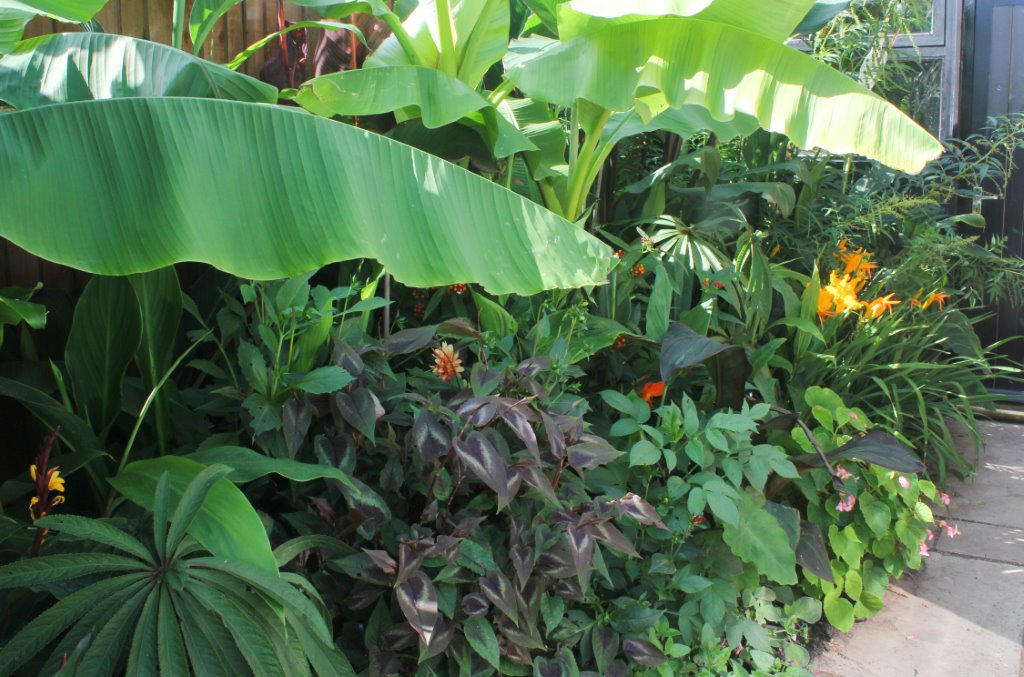
This year’s garlic suffered from leek rust due to the damp spring and the crop is poor. The orange pustules over the leaves appeared early and became so bad that the foliage died before the ‘bulb’ had time to develop. I was growing a variety, that’s normally at home in mid France, just to see what would happen – now I know! The remnants will now be lifted and dried in the sunshine as conditions are perfect, before storing in trays. Sadly there is no control for leek rust, other than carefully clearing all of the infected debris, rotating the crops and trying again next year – using a variety more suitable to our climate!
Check hanging baskets and containers three times a day, particularly if they are small containers, packed with plants. Push your fingers into the compost, if is moist, compost crumbs stick to your fingers; if they are clean, give the compost a thorough soaking. Don’t bother watering lawns, they are surprisingly resilient and soon become green once the rain returns – it’s one of the miracles of nature! Water borders and vegetable plots in the evening, it then soaks into the soil, rather than evaporating in the sunshine. Water thoroughly – ‘a little and often’ only encourages roots to the surface where they are more vulnerable to drought and water the soil, not the plants! ‘Grey water’ recycled from baths and washbasins can be used if you only use a small amount of detergent but not on edible crops. Trees and shrubs planted last winter need particular attention.
Harvest fruiting crops like courgettes and cucumbers regularly, for continued cropping and thin melons leaving one or two fruits to mature on the plant and keep the compost moist.
Now is a good time to summer prune restricted growth fruit like espaliers, cordons, fans and ‘stepovers’.
The method is simple; cut back the leader (or main stem) to one bud, any mature side shoots greater than 15cm long from the main stem should be reduced to three leaves above the cluster of leaves at the base and any shoots from existing spurs should be cut back to one bud above the cluster of leaves at the base of the shoot. It is the perfect job for a late summer evening. Apples and pears should also be thinned; dessert varieties to about 10cm apart, culinary to 15-20cm and plums to 5 cm apart. Thinning heavy cropping varieties of plums like ‘Victoria’ prevents the branches from breaking and stops ‘biennial’ cropping where crops fluctuate between good and poor.
Plants in my ‘Exotic’ border were fed with general fertiliser from planting until the end of July until they were established. Leafy plants like Musa basjoo and some of the large leaved Canna’s like Canna edulis have put on amazing amounts of growth. Now a lush background has been created, it is time for the Dahlias and some of the smaller flowering Cannas to do their thing! By way of encouragement, they have been fed with high potash fertiliser, this and regular dead heading should provide a lovely display and keep them flowering until the first frosts. The fun starts here!
Happy Gardening! Matt


